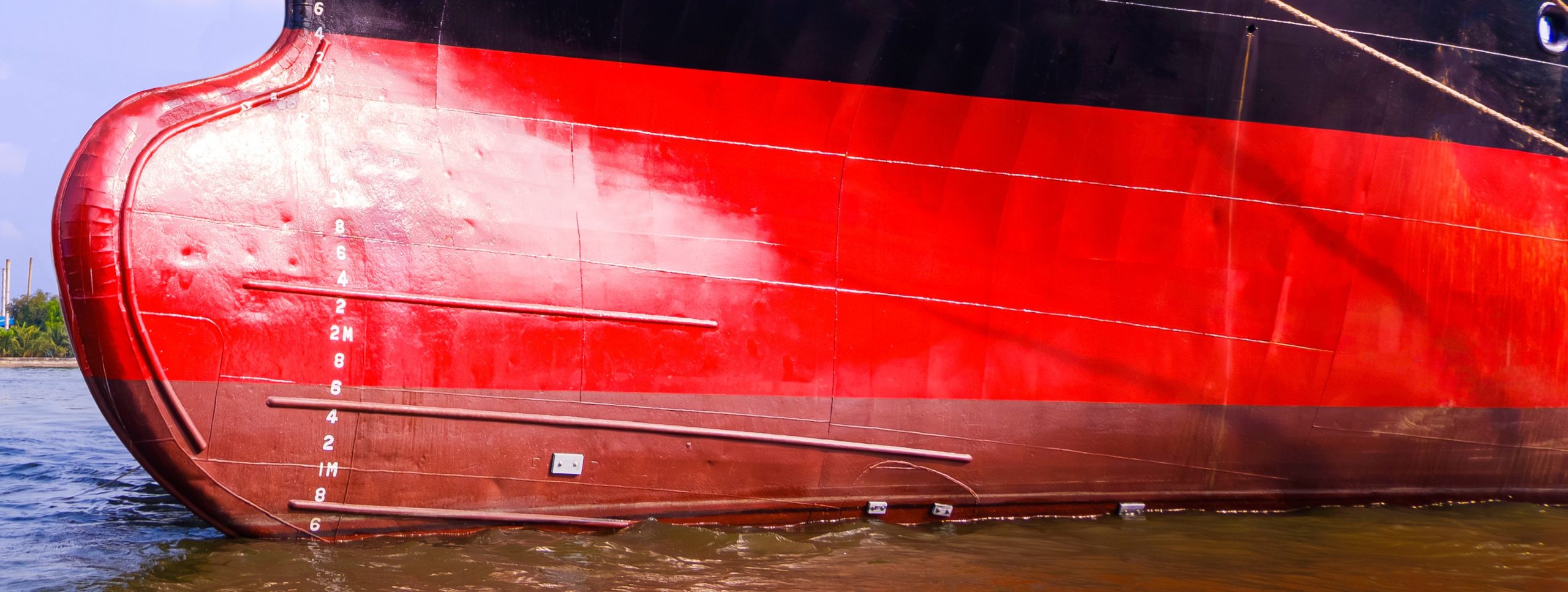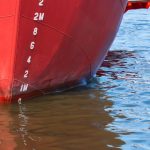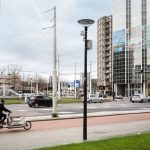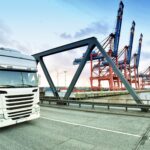
Can AI help measure vessel draft?
Measuring the draft of a vessel is currently done manually from a boat, but for how long? Could Artificial Intelligence (AI) do this task? A trial in the Port of Amsterdam is underway to see if AI can be used to do this faster and more sustainably.
Before ships are permitted to clear the lock their draft must be measured. This is currently done by an official – the lock attendant who stands guard on the wall of the lock – from a boat that boatmen sail around the ship to determine what the ship’s draft is on the basis of the draft marks. But AI now offers a new solution that allows for quicker, more efficient, and more accurate measurements. Wouter Coosemans, Operation Manager at the Port of Amsterdam, and Michael Dubbeldam, domain architect at Technolution specialized in Vision AI, tell us about this innovation in the harbor of Amsterdam.
From manual measurement to AI
“Before we can allow vessels to clear the lock and enter the North Sea Canal, we have to know their maximum draft,” Wouter explains. “At the moment, an official of ours steps onto a boat operated by boatmen to determine the draft of the ships. This can be difficult due to weather conditions, including swell caused by wind. As a result, it is often a time-consuming job. We were looking for a quicker, more efficient, and more accurate way of measuring.”
Technolution had the solution, Michael Dubbeldam says: “We installed a camera on the fortress island of IJmuiden. This camera records incoming vessels so that we can zoom in on the draft marks on the hull of the ship and record these. These images are then fed through AI models that automatically and accurately calculate the precise location of the waterline in relation to the draft mark digits on the hull. We do this up to a hundred times for each mark, to compensate for waves and the movements of the ship.”
The numbers are then forwarded to the traffic controller in the Port Operation Center, who receives a “go” or “no go” from the Vessel Traffic Coordinator, determining whether the vessel is permitted into the lock. Wouter: “The measurement is done and corrected for seawater density. Ships may enter the lock if they have a maximum draft of 13.75 meter in saltwater. The water in the outer harbor is not fully saltwater. What we do, therefore, is measure the salinity of the seawater using a salinity measurement buoy that measures the salinity across the draft. The measurement data is included in the correction of the draft measurement of the vessel.” So as to be able to show objectively how the system works, a measurement report is generated. Michael: “This measurement report contains the recordings, so you can check how the system performed the measurement. This measurement report is then added to the vessel’s electronic file.”
Smart components
What makes this solution so innovative? Michael explains: “Use of Vision AI has been around for a while, but it has only become mature enough to be deployed recently. It’s not that easy to make the system reliable. But this system doesn’t just give a static image, it really looks for its ‘target’ so that it can perform these measurements. Technologically speaking, this is really interesting and innovative for us. The system also uses EDGE AI, smart components that do the measuring. Currently it takes a while before you have the data, but we’re in the process of optimizing this.”
Saving time and CO2 emissions
The ambition is to be able to perform the draft measurement within 2 minutes: “Depending on wind and current, it may take a little longer before we have the data,” Wouter says. A lot of time can be saved by using AI to do the draft measurements.
What further ambitions do they have? Michael: “What we would like is to be able to measure sailing vessels in motion, for those ships where that is possible. Ships that are close to the maximum draft will always have to stop so that a precise measurement can be done. But if we can perform this for most ships as are in motion, this can save CO2 emissions and time.” Sailing ships do have a deeper draft, so this will have to be compensated for in the calculation. But even so, the measuring process can be made much more efficient, according to Wouter: “Halting and then restarting a ship takes a lot of energy and time. What we want is to guide vessels through the port of Amsterdam as quickly, safely, and sustainably as possible. This method helps us do that.”
Read more about smart solutions



